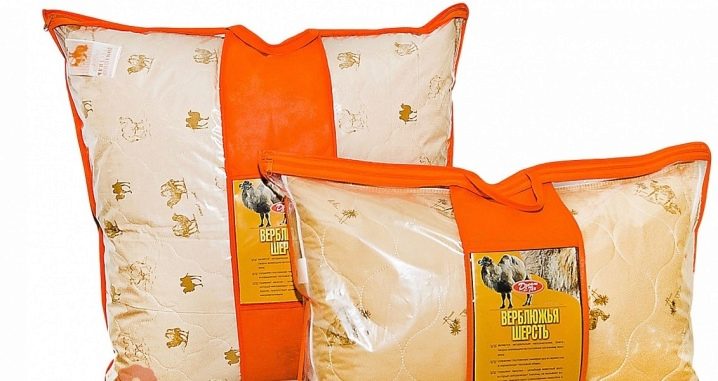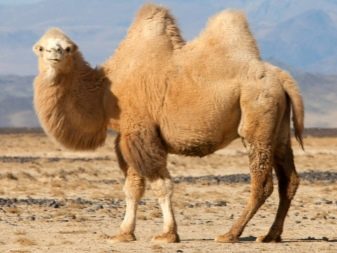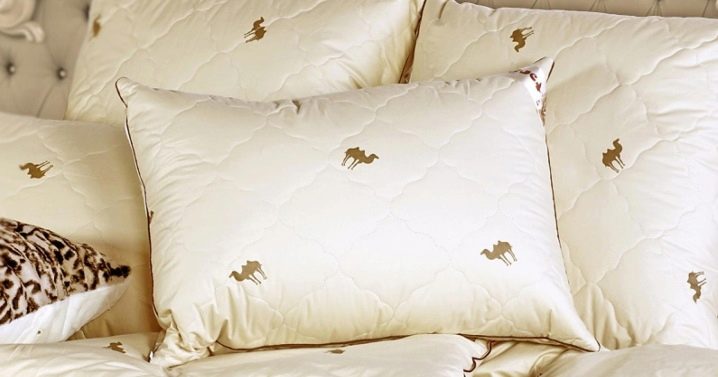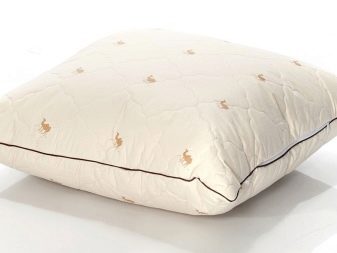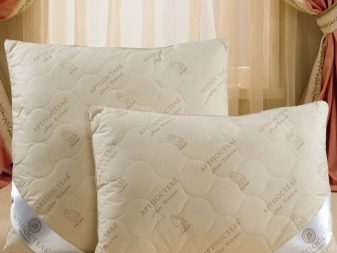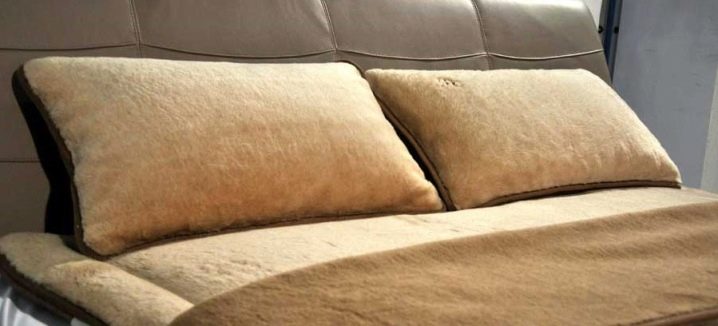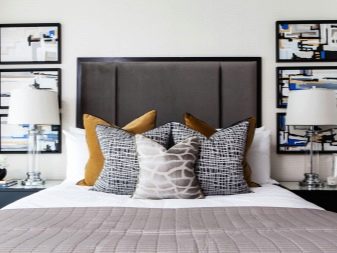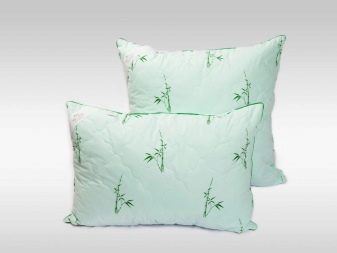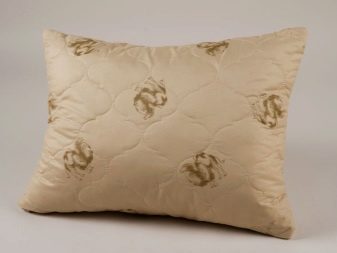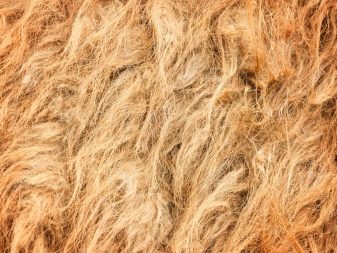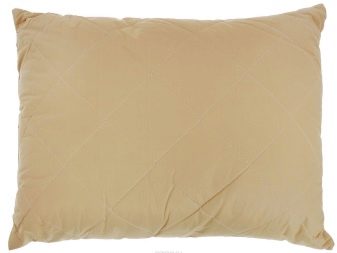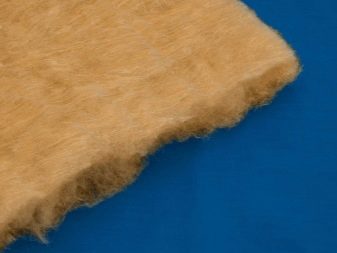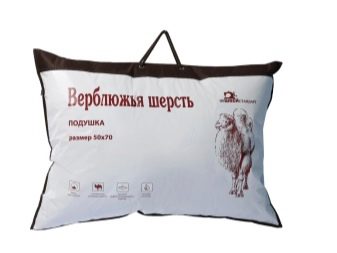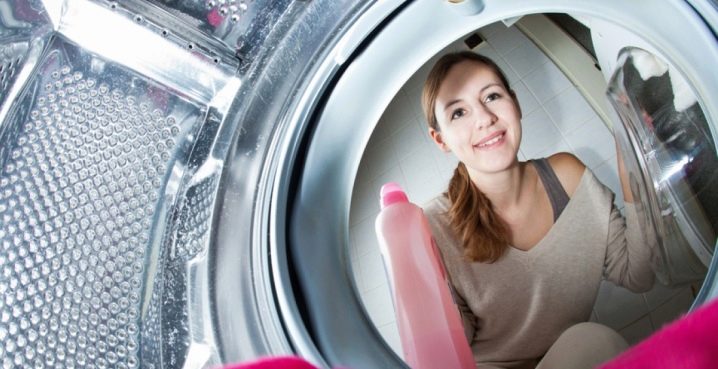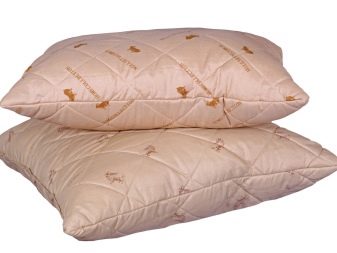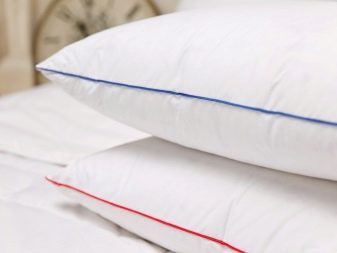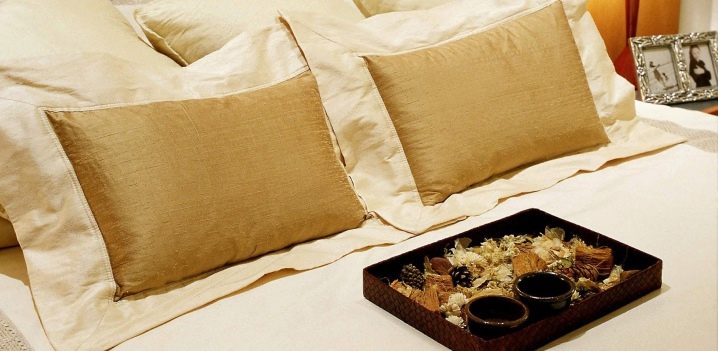Camel wool cushions
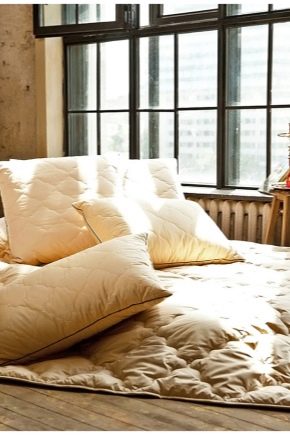
For a pleasant and healthy sleep, not only the bed and the mattress are important - an indispensable attribute for a good night’s rest is a pillow. One of the best options is considered to be a pillow made of camel hair, which will not only help you sleep, but also contribute to the preservation of health, beauty and youth.
Sleeping accessories with unique properties
Camel wool is usually obtained from the double-humped “desert ships” of the Bactrians, the largest members of their family, also distinguished by the most dense coat. The main feature of this camel is two humps, which are the main "suppliers" of wool.
Camels are bred in many countries, but the most valuable wool is considered to be the one given by the Mongolian Bactrians.
Features, pros and cons of filler
Like the wool of any animal, camel is divided into several species. It is considered the most valuable down. The peculiarity of this wool is in the structure of the hair - it is hollow from the inside, which makes it unusually light and soft. In addition, in this natural material in sufficiently large quantities contains lanolin - animal wax, which provides a positive effect on human well-being.
Due to the peculiarities of camel wool, pillows with such a filler have many advantages:
- They do not attract dust and dirt.They create a natural barrier that protects the sleeper from electromagnetic fields (neutralizes the effects of static materials and electricity).
- The cushion absorbs moisture easily (sweat, released during sleep), and then just as easily evaporates it.
- These products are very light and soft.
- Camel wool does not lose its qualities for a very long time.therefore, a product with such a filler, if properly used, will be very durable.
- Lanolin protects the wool not only from dirt, but also from the development of various bacteria and microorganisms harmful to humans.
- Camel hair allows air to pass unhindered.helping to keep cool in summer and warm in winter.
As for the impact on human health, the beneficial properties of camel down were appreciated by the ancient Egyptians. Pillows with this filler contribute to:
- To soften the nasopharyngeal mucosa during sleep, they prevent the penetration of pathogenic bacteria into the body.
- Expansion of vessels and capillariesthanks to which blood circulation improves, and tissues and muscles get more oxygen. This has a positive effect on the skin: its color improves, the risk of wrinkles is reduced.
- Removal of toxins from the bodyaccumulated in a day.
- Getting rid of regular headaches and chronic fatigue.
In addition, camel hair helps relieve spinal pain, joint and muscle pain.
The disadvantages of wool camel pillows most often include the following:
- With the wrong care wool quickly falls, and to return it to its former state is almost impossible. Such a pillow becomes unusable.
- Camel down can be chosen by dust mites that cause allergies. By the way, this issue is still not fully understood, and scientists cannot claim that these ticks can be turned up in the filler.
- High enough cost products.
In addition, speaking of the shortcomings of fillers from down of desert animals, it is worth noting several misconceptions that sometimes confuse people:
- Misconception number 1. Unpleasant smell. Camel hair has a specific sweetish aroma, but as a result of processing it practically disappears. If it comes to a quality product, you can smell it only if you have an extremely sensitive sense of smell.
- Misconception number 2. Sleeping on such pillows is very hot, and sweating increases in the sleepers. They are really warm, but their heat is “dry.” Material properties allow it to absorb moisture, leaving the surface dry and retaining heat.
- Misconception number 3. The camel's hair is pricked. Used in the manufacture of bedding fluff is very delicate and has no "thorns".If coarser wool is used as a filler, then it can really tingle. However, with proper treatment, this "thorniness" even provides a pleasant massage effect, and does not cause discomfort.
Important! There are few minuses, but you should definitely consider them before buying a pillow filled with wool of the “ship of the desert”.
The better sheep wool and bamboo?
The main "competitors" of the fillers of camel wool are considered materials such as sheep wool and bamboo. However, camel down has undoubted advantages over these natural materials. Both bamboo and wool fillers quickly absorb moisture. Features of the structure of animal fluff allow this moisture to evaporate later, but cellulose does not have this property. Bamboo pillows get wet quickly and dry for a very long time.
In addition, the bamboo fibers inside the cushion can be deformed, which leads to a gradual loss of volume. It is impossible to restore the integrity of the bamboo filler, while the woolen one is sufficiently whipped to make the pillow once more lush and soft. As for the comparison of camel and sheep wool, they are very similar in their qualities, but at the same time the first one is much lighter, warmer and stronger.
Indications and contraindications
Of course, the choice of a filler for a pillow is a matter of taste and financial possibilities. However, there are categories of people whom professional doctors recommend using products with down camels for sleep. These include people:
- with diseases of the peripheral nervous system (neuralgia, neuropathy and others);
- with rheumatism;
- with radiculitis;
- with various types of arthrosis;
- with arthritis;
- with osteochondrosis and some orthopedic diseases;
- diseases of ENT organs;
- with dermatological skin diseases.
In addition, these pillows are perfect for people with impaired blood supply and a weakened immune system. Despite the widespread belief that lanolin can be harmful for asthmatics, in some cases, doctors still recommend that people who suffer from this disease use camel pillows for sleep. Experts have questioned the orthopedic properties of products with such a filler.It is believed that they are too soft and can not support the neck and head well enough during sleep. Therefore, the use of such pillows is not recommended for those who suffer from pain in the neck.
How to choose?
It is clear that only natural camel wool has all the healing properties and virtues. Therefore, when choosing a pillow with such a filler, it is important to carefully consider the assessment of the quality and naturalness of the material. It should be remembered that the natural fluff of the “ships of the desert”:
- much easier artificial options;
- very softgentle and smooth to the touch;
- when burning emits a specific "animal" smell.
Of course, it is unlikely that they can set fire to the fibers in the store, but anyone can touch and estimate the weight.
It is necessary to carefully examine the label. It must be indicated "100% camel wool". The inscription "camel hair" without specifying percentages can mean that the filler of a natural product contains very little - or not at all. In order not to get a fake and not to spend a lot of money in vain, experts recommend buying pillows only in proven places.In branded stores you can always not only examine the filler in detail, but also get acquainted with all the quality certificates.
When buying it is worth considering that modern manufacturers often offer combined (two-section) products. These pillows consist of a top cover with a wool filling and a “core” of polyester fibers. The polyether component makes the bedroom more elastic and less allergenic. However, it does not interfere with the healing properties of fluff.
Such pillows today are considered the most comfortable and practical.
How to care?
It is believed that caring for camel down pillows is difficult, but it is not:
- Products with such a filler can be washed in a washing machine. The main thing is to follow a number of specific rules. It is possible to erase only in the mode of delicate washing, at a water temperature of not more than 300 C and without the “spin” function.
- Handwash. It is more preferable than the machine. The process consists of pre-soaking for 15 minutes in warm water and gently pressing. Before soaking, water is added to the detergent and stirred until complete dissolution.
Rinse the product is also necessary in warm water. If necessary, this procedure is repeated several times. Squeeze the pillow should be light longitudinal movements. When spinning it in any case can not be twisted, so as not to damage the wool fibers. Dry cleaning can also be used as a cleaning option for bedding. However, it should be borne in mind that this method greatly reduces the amount of lanolin and may lead to a deterioration in the quality of the product. Using this method too often is not recommended. As for detergents for washing camel pillows, it is better to use those tools that are designed for wool products. The best option would be with the addition of lanolin. You can use liquid detergents and shampoos.
To dry products with such a filler should be in rooms that are well ventilated, or on the street. But not in the sun! In the periods between washings, pillows are recommended to dry periodically. To do this, they are put on a flat horizontal surface and straighten well. They can be cleaned with a vacuum cleaner or just knock out.To get the best effect from washing and drying, do it better in the warm season.
Ventilate bedding is necessary and after purchase, before use. This will help fill the filler with oxygen and straighten. Keep pillows with wool in dry and well ventilated areas, but not in plastic bags. At the same time, experts advise to limit the ingress of direct sunlight on them. For additional protection of products, the use of removable covers is recommended.
In addition, in order for sleeping accessories not to lose their useful properties and softness longer, they should be whipped from all sides before and after use. This procedure prevents caking of hair and the formation of lumps.
Review on the pillow made of camel wool, see in this video.
